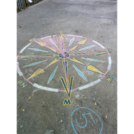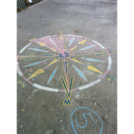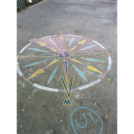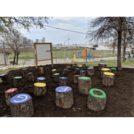
Students will use their knowledge of fractions to divide whole numbers
- Subject:
- Mathematics
- Material Type:
- Lesson Plan
- Author:
- rgothaii@rgdeuceenterprises.com
- Date Added:
- 07/22/2021

Students will use their knowledge of fractions to divide whole numbers

Students will use their knowledge of operations (addition and subtraction) of fractions with unequal denominators to solve real world problems.

Students will use their knowledge of operations (addition and subtraction) of fractions with unequal denominators to solve real world problems.

STUDENT ACTIVITY - 5th - TXStudents will use their knowledge of operations (addition and subtraction) of fractions with unequal denominators to solve real world problems.This activity was created by Out Teach (out-teach.org), a nonprofit providing outdoor experiential learning to transform Science education for students in under-served communities.

A college (or advanced high school) level text dealing with the basic principles of matrix and linear algebra. It covers solving systems of linear equations, matrix arithmetic, the determinant, eigenvalues, and linear transformations. Numerous examples are given within the easy to read text. This third edition corrects several errors in the text and updates the font faces.

This book is designed for the transition course between calculus and differential equations and the upper division mathematics courses with an emphasis on proof and abstraction. The book has been used by the author and several other faculty at Southern Connecticut State University. There are nine chapters and more than enough material for a semester course. Student reviews are favorable.
It is written in an informal, conversational style with a large number of interesting examples and exercises, so that a student learns to write proofs while working on engaging problems.

Students will use their knowledge of geometric shapes to find real world examples outdoors.

Students will measure plants and create bar graphs to compare data to actual mature plant heights.

STUDENT ACTIVITY - 3rd - GA/TXThis is a distance-learning lesson students can complete at home. Students will measure plants and create bar graphs to compare data to actual mature plant heights.This activity was created by Out Teach (out-teach.org), a nonprofit providing outdoor experiential learning to transform Science education for students in under-served communities.

The typical introductory real analysis text starts with an analysis of the real number system and uses this to develop the definition of a limit, which is then used as a foundation for the definitions encountered thereafter. While this is certainly a reasonable approach from a logical point of view, it is not how the subject evolved, nor is it necessarily the best way to introduce students to the rigorous but highly non-intuitive definitions and proofs found in analysis.
This book proposes that an effective way to motivate these definitions is to tell one of the stories (there are many) of the historical development of the subject, from its intuitive beginnings to modern rigor. The definitions and techniques are motivated by the actual difficulties encountered by the intuitive approach and are presented in their historical context. However, this is not a history of analysis book. It is an introductory analysis textbook, presented through the lens of history. As such, it does not simply insert historical snippets to supplement the material. The history is an integral part of the topic, and students are asked to solve problems that occur as they arise in their historical context.
This book covers the major topics typically addressed in an introductory undergraduate course in real analysis in their historical order. Written with the student in mind, the book provides guidance for transforming an intuitive understanding into rigorous mathematical arguments. For example, in addition to more traditional problems, major theorems are often stated and a proof is outlined. The student is then asked to fill in the missing details as a homework problem.

Students measure and analyze forces that act on vehicles pulling heavy objects while moving at a constant speed on a frictional surface. They study how the cars interact with their environments through forces, and discover which parameters in the design of the cars and environments could be altered to improve vehicles' pulling power. This LEGO® MINDSTORMS® based activity is geared towards, but not limited to, physics students.

This is a great textbook for Intermediate Algebra or College Algebra course. This textbook includes covers standard topics such as linear functions/equation, graphs and functions, systems of linear equations, polynomials, rational functions, roots and radicals, quadratic functions/equations, exponential and logarithmic functions, conics, and sequences and series. All of topics are self-contained and instructors do not have to provide supplements. However, instructors, who plan to cover trigonometric functions, may need to provide extra materials.

Intermediate Algebra is a textbook for students who have some acquaintance with the basic notions of variables and equations, negative numbers, and graphs, although we provide a "Toolkit" to help the reader refresh any skills that may have gotten a little rusty. In this book we journey farther into the subject, to explore a greater variety of topics including graphs and modeling, curve-fitting, variation, exponentials and logarithms, and the conic sections. We use technology to handle data and give some instructions for using a graphing calculator, but these can easily be adapted to any other graphing utility.

It is essential to lay a solid foundation in mathematics if a student is to be competitive in today's global market. The importance of algebra, in particular, cannot be overstated, as it is the basis of all mathematical modeling used in applications found in all disciplines.
Traditionally, the study of algebra is separated into a two parts, Elementary and Intermediate Algebra. This textbook by John Redden, Intermediate Algebra, is the second part. Written in a clear and concise manner, it carefully builds on the basics learned in Elementary Algebra and introduces the more advanced topics required for further study in applications found in most disciplines.
Used as a standalone textbook, Intermediate Algebra offers plenty of review as well as something new to engage the student in each chapter. Written as a blend of the traditional and graphical approaches to the subject, this textbook introduces functions early and stresses the geometry behind the algebra. While CAS independent, a standard scientific calculator will be required and further research using technology is encouraged.
Intermediate Algebra is written from the ground up in an open and modular format, allowing the instructor to modify it and leverage their individual expertise as a means to maximize the student experience and success.
A more modernized element, embedded video examples, are present, but the importance of practice with pencil and paper is consistently stressed. Therefore, this text respects the traditional approaches to algebra pedagogy while enhancing it with the technology available today.
The importance of Algebra cannot be overstated; it is the basis for all mathematical modeling used in all disciplines. After completing a course sequence based on Elementary and Intermediate Algebra, students will be on firm footing for success in higher-level studies at the college level.

Introductory statistics courses prepare students to think statistically but cover relatively few statistical methods. Building on the basic statistical thinking emphasized in an introductory course, a second course in statistics at the undergraduate level can explore a large number of statistical methods. This text covers more advanced graphical summaries, One-Way ANOVA with pair-wise comparisons, Two-Way ANOVA, Chi-square testing, and simple and multiple linear regression models. Models with interactions are discussed in the Two-Way ANOVA and multiple linear regression setting with categorical explanatory variables. Randomization-based inferences are used to introduce new parametric distributions and to enhance understanding of what evidence against the null hypothesis “looks like”. Throughout, the use of the statistical software R via Rstudio is emphasized with all useful code and data sets provided within the text. This is Version 3.0 of the book.

An Open Education Resource
Short Description:
Mathematical modelling plays an increasingly important role in almost any area of life sciences, and this interactive textbook focuses on the areas of population ecology, infectious diseases, immunology and cell dynamics, gene networks and pharmacokinetics. It is aimed at anyone who is interested in learning about how to model biological systems, including undergraduate and postgraduate mathematics students who have not studied mathematical biology before, life-sciences students with an interest in modelling, and post-16 mathematics students interested in university-level material. Some mathematical knowledge is assumed, and the mathematical models used are all in the form of ordinary differential equations.
Word Count: 41598
(Note: This resource's metadata has been created automatically by reformatting and/or combining the information that the author initially provided as part of a bulk import process.)

Word Count: 72364
(Note: This resource's metadata has been created automatically by reformatting and/or combining the information that the author initially provided as part of a bulk import process.)

These notes are intended to provide a brief, noncomprehensive introduction to GNU Octave, a free open source alternative to MatLab. The basic syntax and usage is explained through concrete examples from the mathematics courses a math, computer science, or engineering major encounters in the first two years of college: linear algebra, calculus, and differential equations.

Game theory is an excellent topic for a non-majors quantitative course as it develops mathematical models to understand human behavior in social, political, and economic settings. The variety of applications can appeal to a broad range of students. Additionally, students can learn mathematics through playing games, something many choose to do in their spare time! This text also includes an exploration of the ideas of game theory through the rich context of popular culture. It contains sections on applications of the concepts to popular culture. It suggests films, television shows, and novels with themes from game theory. The questions in each of these sections are intended to serve as essay prompts for writing assignments.

Our goal with this textbook is to provide students with a strong foundation in mathematical analysis. Such a foundation is crucial for future study of deeper topics of analysis. Students should be familiar with most of the concepts presented here after completing the calculus sequence. However, these concepts will be reinforced through rigorous proofs.
The textbook contain topics of real analysis usually covered in a 10-week course: the completeness axiom, sequences and convergence, continuity, and differentiation. The lecture notes also contain many well-selected exercises of various levels. Although these topics are written in a more abstract way compared with those available in some textbooks, teachers can choose to simplify them depending on the background of the students. For instance, rather than introducing the topology of the real line to students, related topological concepts can be replaced by more familiar concepts such as open and closed intervals. Some other topics such as lower and upper semicontinuity, differentiation of convex functions, and generalized differentiation of non-differentiable convex functions can be used as optional mathematical projects. In this way, the lecture notes are suitable for teaching students of different backgrounds.